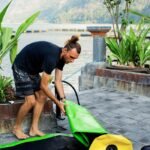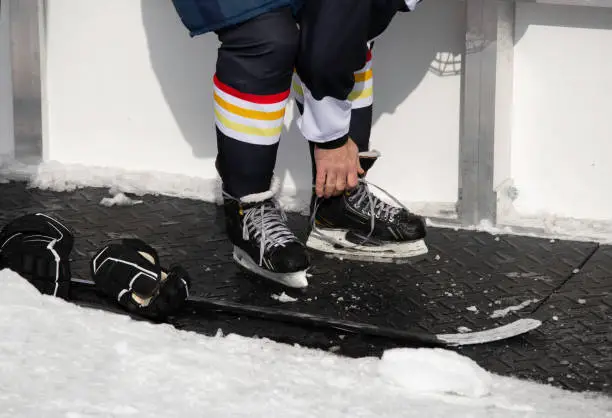Key Takeaways
- Synthetic ice offers a consistent surface for practice, regardless of season or weather.
- Cost efficiency and low maintenance make synthetic ice a practical choice.
- It provides an eco-friendly alternative to traditional ice rinks.
- Synthetic ice surfaces foster skill development and training versatility.
- A valuable resource for athletes and recreational skaters alike.
Introduction to Synthetic Ice
The allure of skating on demand is a dream for many, but it’s now a reality thanks to advancements in synthetic ice technology. This innovation grants skaters the freedom to skate whenever and wherever, unbound by the constraints of traditional ice rink schedules. At the forefront of this evolution is synthetic ice by KwikRink, offering a surface so ingeniously designed that it replicates the feel and glide of natural ice. For enthusiasts and professional athletes, this technology is more than a substitute; it’s a transformative experience that enhances training and recreational opportunities without seasonal limitations.
Synthetic ice signifies a shift in convenience and strategic access to and deployment of skating facilities. It synthesizes real-world availability, affordability, and adaptability needs into one cohesive product driving interest across diverse user bases—from sports professionals to casual skaters eager to expand their experience.
Year-Round Availability
Weather-induced disruptions can derail a skating routine, but synthetic ice provides a steadfast surface by defying climate constraints. Whether summer heatwaves or winter chills, synthetic ice’s consistent quality does not falter, offering a stable platform year-round. This 24/7 accessibility markedly benefits skaters, eliminating the uncertainties accompanying seasonal rinks and providing reliability essential for training and leisure skating.
This constant availability is a boon for athletes and recreational users who enjoy uninterrupted skating throughout the year. The continuity helps skaters maintain and build skills, promoting growth and allowing for improvements even out of season. It is crucial for competitive athletes aiming to stay at the top of their game.
Cost-Effective Solution
Maintaining an ice rink traditionally calls for hefty expenditures—from energy-consuming refrigeration systems to resurfacing equipment, not to mention regular water costs. With synthetic ice, stakeholders enjoy fiscal relief from these burdens. As highlighted by Athletic Business, synthetic rinks eliminate the need for such high-maintenance tasks, ensuring affordability in scenarios ranging from personal setups to broad community or privately owned rinks.
The economic impact is profound, reducing operational costs significantly and redistributing funds towards enhancing ice surfaces, upgrading facilities, or expanding programs for skaters. This accessibility empowers communities to offer improved skating facilities and opportunities, fueling a wider reach for the sport by making it attainable for more enthusiasts.
Low Maintenance Needs
Traditional rinks demand meticulous care to preserve their surface integrity, safety, and performance. However, synthetic ice revolutionizes this routine with simplicity. The maintenance typically consists of straightforward procedures such as sweeping and mopping, ensuring the surface remains clean and functional without heavy machinery or frequent resurfacing.
This hassle-free maintenance routine and the resilient nature of synthetic materials mean fewer disruptions, lasting durability, and opportunities for longer skating sessions. It allows facility managers to allocate their efforts to enhancing user experiences rather than getting bogged down by extensive and costly upkeep exercises.
Eco-Friendly Choice
As the world intensifies its focus on sustainable practices, synthetic ice’s environmental credentials stand prominent. Unlike traditional ice rinks, which rely on energy-hungry cooling systems to exacerbate carbon footprints, synthetic ice operates without electricity, significantly reducing environmental impact. This aligns with the sustainability priorities outlined by the EPA and encourages eco-conscious choices in recreational use.
Choosing synthetic ice helps communities and individuals lower their energy consumption and embrace sustainable sporting practices. It’s a forward-thinking choice that respects the environment while offering the high-quality skating experience that skaters demand.
Enhanced Skill Development
Continuous practice without seasonal interruptions is a catalyst for performance improvement. Synthetic ice allows skaters to develop and refine their technical abilities with a surface designed to closely mimic the natural ice experience. The identical glide facilitates real-world training that seamlessly translates to traditional ice rinks.
Training Versatility
The surface properties of synthetic ice support diverse skating needs, accommodating disciplines from figure skating pirouettes to intense ice hockey drills. This adaptability makes it a versatile training tool for athletes seeking to diversify their skills, offering a platform for experimenting with new routines and refining techniques year-round.
Endless Possibilities
Synthetic ice installations are versatile, transforming unconventional spaces into permanent or temporary skating rinks. Whether creating a personal backyard rink, setting up a club’s winter venue indoors, or providing seasonal attractions in public squares, its modular nature allows configurations that bring ice skating directly into communities and homes.
This flexibility effectively extends the sport’s reach, making it more accessible, engaging new audiences, and fostering community development. Bringing rinks closer to home, synthetic ice stimulates increased participation, skill acquisition, and community engagement, emphasizing its role beyond sport—promoting healthy lifestyles and active social engagement.
Conclusion
Synthetic ice is a cornerstone innovation reshaping how skating is accessed and enjoyed across different environments and skill levels. From individual skaters to communities, it fulfills a growing need for a sustainable, cost-effective, and adaptable ice-skating solution. Its expanding presence promises to enhance the future of skating, offering enriched experiences with minimal environmental footprint, promoting a future where sports inclusivity and environmental stewardship go hand in hand.











